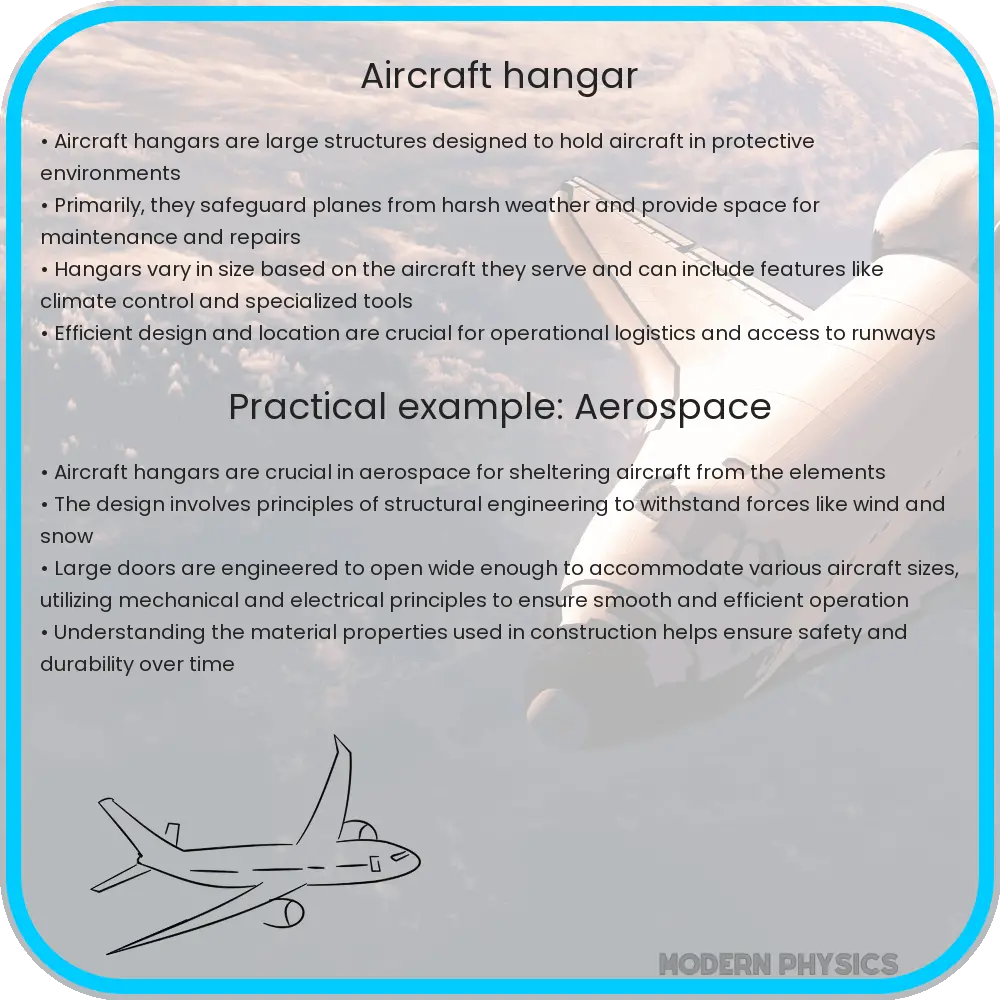Explore aircraft hangar design focusing on structural support, stability, load analysis, and the integration of modern technology and safety.

Aircraft Hangar Design: Ensuring Structural Support and Stability
The design of aircraft hangars demands a meticulous approach, focusing on structural support, stability, and load analysis. These structures must accommodate large aircraft while ensuring safety, durability, and flexibility. This article delves into the key aspects of aircraft hangar design, emphasizing the importance of structural support and stability.
Understanding Load Analysis in Hangar Design
Load analysis is crucial in hangar design, involving the assessment of various loads that the structure will bear. This includes dead loads, live loads, wind loads, and snow loads. Dead loads refer to the weight of the structure itself, including the roofing materials and permanent fixtures. Live loads encompass variable weights like maintenance equipment and personnel. Wind loads are especially critical in hangar design due to the large surface area of the structures, making them susceptible to high wind pressures. Similarly, in regions prone to heavy snowfall, snow loads must be carefully calculated to ensure structural integrity.
Structural Support: Materials and Design
The choice of materials for aircraft hangars is vital for ensuring structural support and stability. Steel is a popular choice due to its strength-to-weight ratio, durability, and versatility. The design of the hangar also plays a pivotal role. Clear span designs are often preferred as they offer unobstructed space for aircraft storage and maintenance. This design eliminates internal columns, providing more operational space and flexibility.
Stability Considerations in Hangar Construction
Stability in hangar construction is achieved through careful design and engineering. This includes the consideration of lateral stability to resist wind forces and seismic stability in earthquake-prone areas. The foundation of the hangar also contributes significantly to its overall stability. A well-engineered foundation ensures that the hangar remains secure and level, even under varying load conditions.
In conclusion, the design of aircraft hangars is a complex process that requires a deep understanding of structural engineering principles. Load analysis, material selection, and stability considerations are crucial to ensure that these large structures can safely accommodate aircraft while withstanding various environmental and operational stresses.
Advanced Techniques in Hangar Design
Advancements in technology have introduced new dimensions in aircraft hangar design. One such innovation is the use of computer-aided design (CAD) and 3D modeling, which allows for more precise and efficient design processes. These tools enable designers to simulate various load conditions and assess the hangar’s response, leading to more accurate and safe designs.
Energy Efficiency and Sustainability
Modern aircraft hangar designs also incorporate energy efficiency and sustainability. This can be achieved through the integration of insulated panels, energy-efficient lighting, and HVAC systems. Additionally, the use of sustainable materials and the implementation of rainwater harvesting systems contribute to the eco-friendliness of these structures.
Fire Safety and Hangar Ventilation
Fire safety is a critical aspect of aircraft hangar design. The use of fire-resistant materials, along with the installation of fire detection and suppression systems, is imperative. Proper ventilation is also essential to disperse fumes from aircraft and maintenance activities, ensuring a safe working environment.
Adapting to Future Trends
The aviation industry is continuously evolving, and hangar designs must adapt to accommodate future trends. This includes the ability to house new aircraft models with different sizes and specifications. Flexibility in design allows for modifications and expansions as the needs of the aviation industry change.
Conclusion
Aircraft hangar design is a multifaceted discipline that demands a balance between structural integrity, safety, and functionality. The integration of load analysis, material selection, and stability considerations form the foundation of a robust design. With the advent of new technologies and an emphasis on sustainability, modern hangar designs not only meet current requirements but are also adaptable to future advancements in aviation. Ensuring fire safety and efficient ventilation are also paramount for the safe operation of these structures. In sum, the thoughtful design and construction of aircraft hangars play a pivotal role in the aviation industry, underpinning its operational efficiency and safety standards.
